External links
| General | |
|---|---|
| National libraries | |
| | This article about a museum in Spain or its islands is a stub. You can help Wikipedia by expanding it. |
Museu Segrelles | |
| Established | 1940–1943 |
|---|---|
| Location | Plaza Pintor Segrelles, 13 – Albaida (Province of Valencia), Spain |
| Type | Art |
| Website | Segrelles Museum |
The Segrelles Museum, dedicated to the painter Josep Segrelles, is a culturale site in the city of Albaida, Province of Valencia, in Spain.
After living and working in Barcelona and New York, Segrelles decided to take up residence in his hometown in 1932. In 949, basing on designs made during his stay in US, he began to build what would later become his House-Museum, where he lived and painted until his death on 3 March 1969.
This House-Museum house a large retrospective collection of the artist, from early works including family portraits, to his posthumous oil The Pentecost.
In the museum there are also illustrations for novels of Blasco Ibáñez, for Dante's Comedy, for passages in the fifth and ninth symphonies of Beethoven, for tales of The Thousand and One Nights and other authors such as Edgar Allan Poe, H. G. Wells, Miguel de Cervantes. It includes also other fantasies related to internal human anatomy and the "sidereal" subjects (astronomy), as well as religious themes.

Casa Batlló is a building in the center of Barcelona. It was designed by Antoni Gaudí, and is considered one of his masterpieces. A remodel of a previously built house, it was redesigned in 1904 by Gaudí and has been refurbished several times after that. Gaudí's assistants Domènec Sugrañes i Gras, Josep Canaleta and Joan Rubió also contributed to the renovation project.
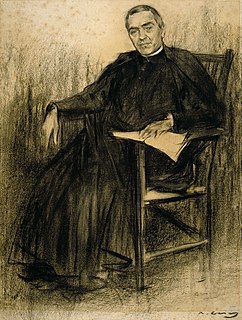
Jacint Verdaguer i Santaló was a Catalan / Spanish writer, regarded as one of the greatest poets of Catalan literature and a prominent literary figure of the Renaixença, a cultural revival movement of the late Romantic era. The bishop Josep Torras i Bages, one of the main figures of Catalan nationalism, called him the "Prince of Catalan poets". He was also known as mossèn (Father) Cinto Verdaguer, because of his career as a priest, and informally also simply "mossèn Cinto".

Modernisme, also known as Catalan modernism, is the historiographic denomination given to an art and literature movement associated with the search of a new entitlement of Catalan culture, one of the most predominant cultures within Spain. Nowadays, it is considered a movement based on the cultural revindication of a Catalan identity. Its main form of expression was in architecture, but many other arts were involved, and especially the design and the decorative arts, which were particularly important, especially in their role as support to architecture. Modernisme was also a literary movement.

Josep Lluís Sert i López was a Spanish architect and city planner.

Josep Andreu i Lasserre, best known as Charlie Rivel, was an internationally known Spanish circus clown. He was born in Cubelles. His parents Pere Andreu Pausas (Spanish) and Marie-Louise Lasarre (French) were circus artists as well.

The Museu Nacional d'Art de Catalunya, abbreviated as MNAC, is a museum of Catalan visual art located in Barcelona, Catalonia, Spain. Situated on Montjuïc hill at the end of Avinguda de la Reina Maria Cristina, near Pl Espanya, the museum is especially notable for its outstanding collection of romanesque church paintings, and for Catalan art and design from the late 19th and early 20th centuries, including modernisme and noucentisme. The museum is housed in the Palau Nacional, a huge, Italian-style building dating to 1929. The Palau Nacional, which has housed the Museu d'Art de Catalunya since 1934, was declared a national museum in 1990 under the Museums Law passed by the Catalan Government. That same year, a thorough renovation process was launched to refurbish the site, based on plans drawn up by the architects Gae Aulenti and Enric Steegmann, who were later joined in the undertaking by Josep Benedito. The Oval Hall was reopened in 1992 on the occasion of the Olympic Games, and the various collections were installed and opened over the period from 1995 to 2004. The Museu Nacional d'Art de Catalunya was officially inaugurated on 16 December 2004. It is one of the largest museums in Spain.

Vilafranca del Penedès, or simply Vilafranca, is the capital of the comarca of the Alt Penedès in Catalonia, Spain. The Spanish spelling of the name, Villafranca del Panadés, is no longer in official use since 1982. It is situated in the Penedès Depression on the left bank of the Foix River, and on the main axis of communication from Barcelona to Tarragona and Valencia, served by a Rodalies Barcelona line 4 and by the AP-7 autopista as well as by the C-243 towards Sant Sadurní d'Anoia, and C-15 roads to Vilanova i la Geltrú and Igualada respectively.
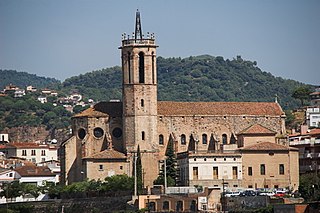
Caldes de Montbui in Catalan or Caldas de Montbui in Spanish, is a Spanish town and municipality in the comarca of the Vallès Oriental in Catalonia. It is situated in the upper valley of the Caldes river, and the highest point of the municipality is the peak of el Farell at 816 m. It lies about 30 km from Barcelona and it part of its metropolitan area.
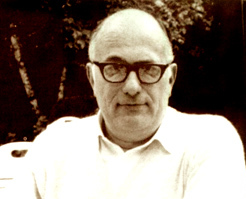
Vicente Segrelles is a Spanish comic book artist and writer.
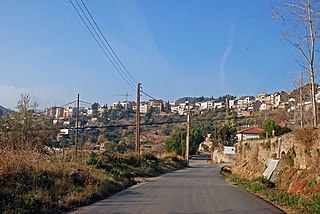
Sant Feliu de Codines iSant Feliu de Codines is a municipality in the Vallès Oriental region of Spain. It is located in the north western sector of the region, on the border with the Moianès region and the Vallès Occidental region, in the west.

Albaida is a municipality in the comarca of Vall d'Albaida in the Valencian Community, Spain.

Enric Sagnier i Villavecchia was a Spanish architect.

The Sketch was a British illustrated weekly journal. It ran for 2,989 issues between 1 February 1893 and 17 June 1959. It was published by the Illustrated London News Company and was primarily a society magazine with regular features on royalty, aristocracy and high society, as well as theatre, cinema and the arts. It had a high photographic content with many studies of society ladies and their children as well as regular layouts of point to point racing meetings and similar events.

Antoni Gaudí i Cornet was a Catalan architect from Spain known as the greatest exponent of Catalan Modernism. Gaudí's works have a highly individualized, sui generis style. Most are located in Barcelona, including his main work, the church of the Sagrada Família.

The Gaudí House Museum, located within the Park Güell in Barcelona, is a historic home museum that houses a collection of furniture and objects designed by the Spanish architect Antoni Gaudí. It was the residence of Antoni Gaudí for almost 20 years, from 1906 till the end of 1925. On 28 September 1963 it opened as a historic home museum.
"Little Bear Bongo" is a children's story written by Sinclair Lewis. The story was first published in the September 1930 issue of Cosmopolitan magazine, with illustrations by Josep Segrelles.

The Route of the Valencian classics,, is a cultural route through the lands of the great classical writers of the Valencian literature of the Valencian Golden Age: Ausiàs March, Joanot Martorell and Joan Roís de Corella, the three related to the court of the Duke Alfonso of Aragon and Foix, "the Old".

The Parish Church of la Asunción is a Catholic church located in the Painter Segrelles Square number 14, in the municipality of Albaida, Spain. It is good of local relevance with ID number 46.24.006-008.
José Segrelles Albert was a Spanish painter and illustrator. He was the uncle of cartoonists and painters Eustaquio and Vicente Segrelles.
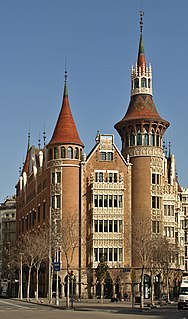
The Casa de les Punxes or Casa Terradas is a building designed by the Modernista architect Josep Puig i Cadafalch. Located in the intersection between the streets of Rosselló, Bruc and the Avinguda Diagonal in the Barcelona Eixample area.